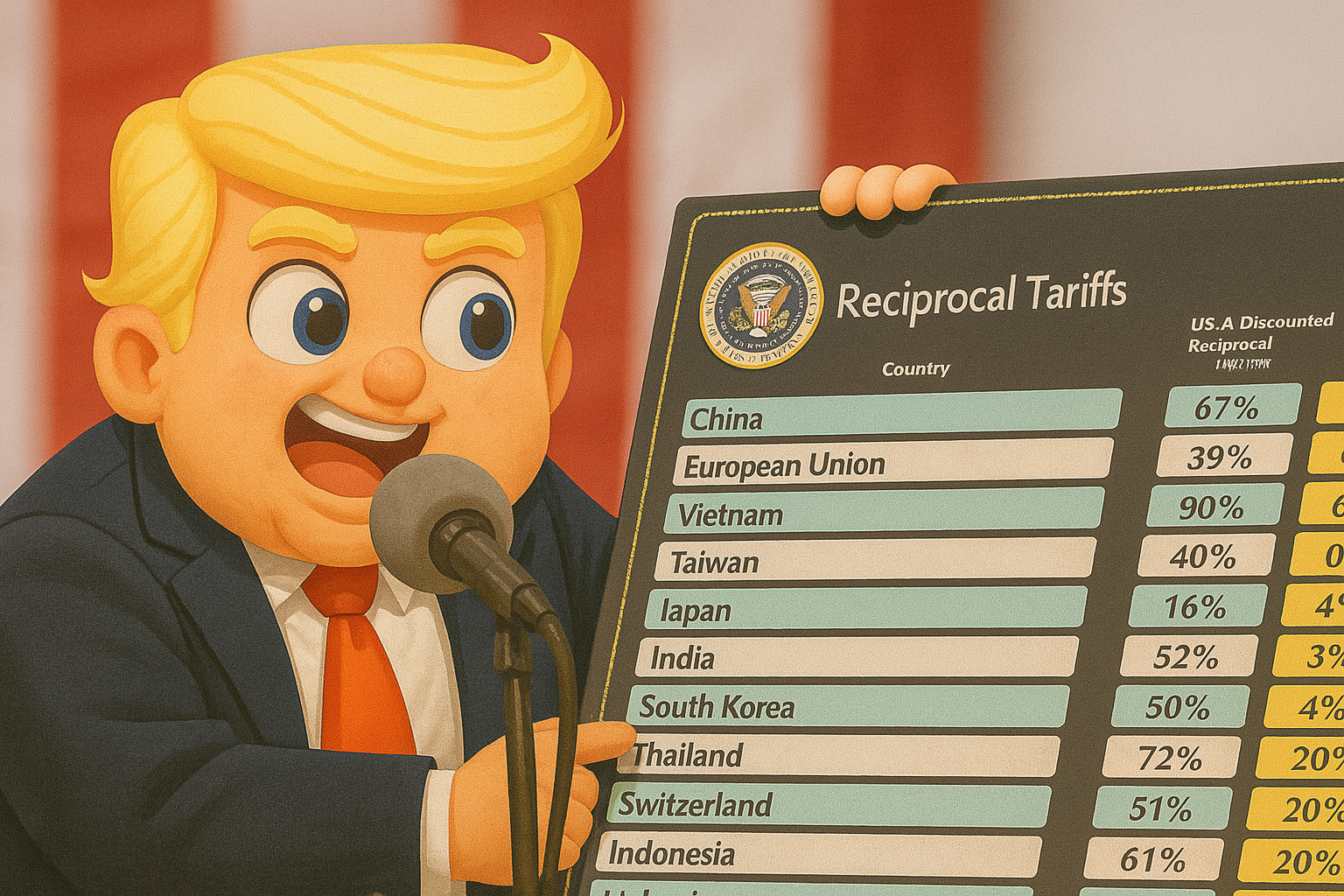2025 has been a turbulent year for tariffs. Initially, since March 2025, the United States imposed additional tariffs ranging from 15% to 25% on Chinese imports, briefly surging up to 145%. However, by May, the U.S. and China reached an agreement, reducing the maximum rate to 30% (with 24% temporarily suspended for 90 days). These tariffs notably affected food processing machinery, automatic packaging equipment, and key components like servo motors and PLC controllers. This development marked an intensified stage of the trade war ongoing since 2018, indicating tariffs may become a regular policy tool. Consequently, this policy shift presents systemic shocks to China’s packaging machine industry but simultaneously pushes technological upgrades and market diversification.

⚠️ Negative Direct Impacts: Increased Costs and Order Losses
1. Reduced Export Competitiveness
Firstly, the additional tariffs directly increased the selling price of Chinese packaging machines in the U.S., significantly impacting export volumes. For instance, fully automated carton vertical packing machines, highly price-sensitive products, experienced a notable decline. According to statistics from January to May 2025, Chinese packaging machine exports to the U.S. dropped by approximately 32%.
2. Increased Technology Blockades
Secondly, tariffs restricted imports of high-end sensors and industrial software, essential for intelligent packaging machine projects. As a result, over 30% of project timelines faced significant delays. Critical components for palletizing robots, primarily sourced from Western companies, highlighted the industry’s ongoing dependency on foreign technology.
3. Supply Chain Shifts
Moreover, to bypass tariffs, North American customers increasingly demanded Chinese suppliers relocate factories to Southeast Asia or Mexico, showing a 47% year-on-year increase. This shift subsequently threatens domestic employment and tax revenue.
🛠️ Enterprise Response Strategies: Technological Breakthroughs and Market Restructuring
1. Achieving Technological Independence
Domestic substitution of core components: In response, leading companies accelerated R&D efforts. For example, a Guangdong-based firm collaborated with the Chinese Academy of Sciences to develop magnetic suspension filling systems, achieving 40% energy savings and obtaining EU certification. Furthermore, YingTai Intelligent launched AI-driven packaging and palletizing systems, achieving precision controls of ±25g, breaking foreign FFS (Form-Fill-Seal) technology monopolies.
Intelligent upgrades: Additionally, QingNiu Technology from Zhangzhou introduced a cloud-based IoT packaging system. By using AI-based diagnostics, this innovation reduced equipment downtime by 80% and operational costs by 40%.
2. Diversified Market Strategies
Emerging market expansions: Benefiting from the RCEP agreement, Chinese food packaging machine exports to ASEAN grew by 21% between January and February 2025. Meanwhile, companies like Tianheng Machinery secured over 40% of their orders from Europe and America through customized solutions.
“Belt and Road” initiatives:
- ASEAN: Food package machine exports rose 21% in early 2025. Specifically, Malaysian demand doubled China’s filling machine exports in 2024.
- India and Vietnam: These markets emerged as the top two export destinations in 2022, each exceeding an 8% share of total exports.

3. Transition to Service-Oriented Models
Furthermore, companies transitioned from merely exporting equipment to offering “technology plus services,” providing remote operation and maintenance, digital twin solutions, and establishing overseas spare parts centers. Consequently, service response time decreased dramatically from 72 hours to just 12 hours. Moreover, by analyzing end-user pain points, firms created tailored solutions and innovative machine designs.
📈 Structural Changes and Future Trends
1. Short-chain Production
To mitigate tariff impacts, businesses increasingly established modular assembly bases in Vietnam and Mexico, retaining only core component production in China. Inspired by Apple’s strategy of shipping Chinese-made components to India for assembly, packaging machinery companies might adopt similar practices.
2. Green and Intelligent Technology Innovations
- Green Technology: Driven by the pursuit of carbon neutrality, demand for energy-efficient packaging equipment surged. Consequently, patent applications related to sustainable packaging technologies rose by 65% in 2025, emphasizing high-pressure processing (HPP) and biodegradable materials.
- AI Integration: Furthermore, YingTai Intelligent’s generative AI modeling and reinforcement learning control technologies doubled traditional equipment efficiency, achieving packaging speeds of 3000 bags/hour.
3. Support from Domestic Policy and Internal Demand
Additionally, the Ministry of Industry and Information Technology’s “Guideline for Equipment Renewal in Key Industrial Sectors” identified palletizing robots as essential for food industry upgrades. The “15th Five-Year Plan” further emphasized intelligent manufacturing, thereby driving digital transformation in the packaging machinery sector. Supported resiliently by automation upgrades in food and pharmaceutical industries, China’s automatic packaging machine market reached 45 billion RMB in 2022, and forecasts predict it surpassing 60 billion RMB by 2027.

💎 Challenges and Prospects: Opportunities Amid Crisis
Short-term Pain:
Initially, SMEs face significant hurdles due to limited technology and capital resources. High transformation costs deter 60% of these businesses, compounded by a shortage of multidisciplinary talent.
Long-term Upgrade Opportunities:
However, tariff pressures force the industry to transition from “cost competition” to “technology and service” dual-driving models. By 2030, projections indicate the global food and beverage automation market will reach $67.8 billion. Thus, Chinese leaders in green and smart package machines could dominate the high-end market, transitioning from “import substitution” to “technology export.”
| Company Type | Technical Capacity | Market Adaptability | Primary Response Strategies |
|---|---|---|---|
| Leading Enterprises | Strong (high patent reserves) | High (diverse market coverage) | High-end R&D, overseas service centers |
| SMEs | Weak (dependent on imported components) | Low (high export dependency) | Relocating production lines, OEM models, lightweight transformation |
Conclusion
In summary, although U.S. tariff policies heavily impacted China’s traditional packaging machine exports, they also catalyzed significant technological advancements. Guided by new “productive quality” policies, firms integrating AI and IoT technologies will likely lead the industry’s transformation. Therefore, regional supply chain restructuring (combining Southeast Asian factories with Chinese R&D) and the shift toward green and intelligent technologies constitute the strategic response to the new global trade order. Over the next 3–5 years, profound restructuring will establish a new landscape characterized by “high-end domestic autonomy, mid-level internationalization, and low-end elimination.”at the same time .Fill-package changes with new developments
Exploring new packaging machine suppliers or seeking innovative food packaging machine solutions amid tariff uncertainties? Fill Package is ready to support your next steps and ensure smooth operations.

